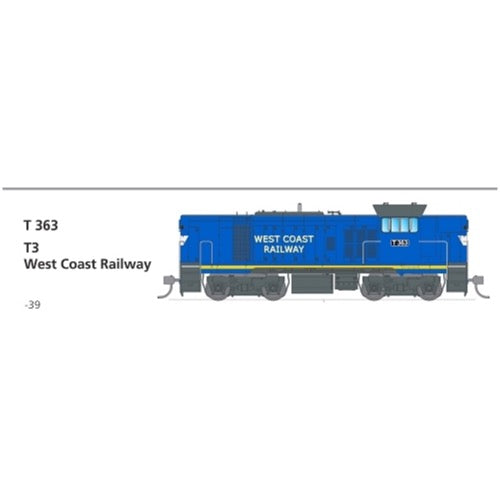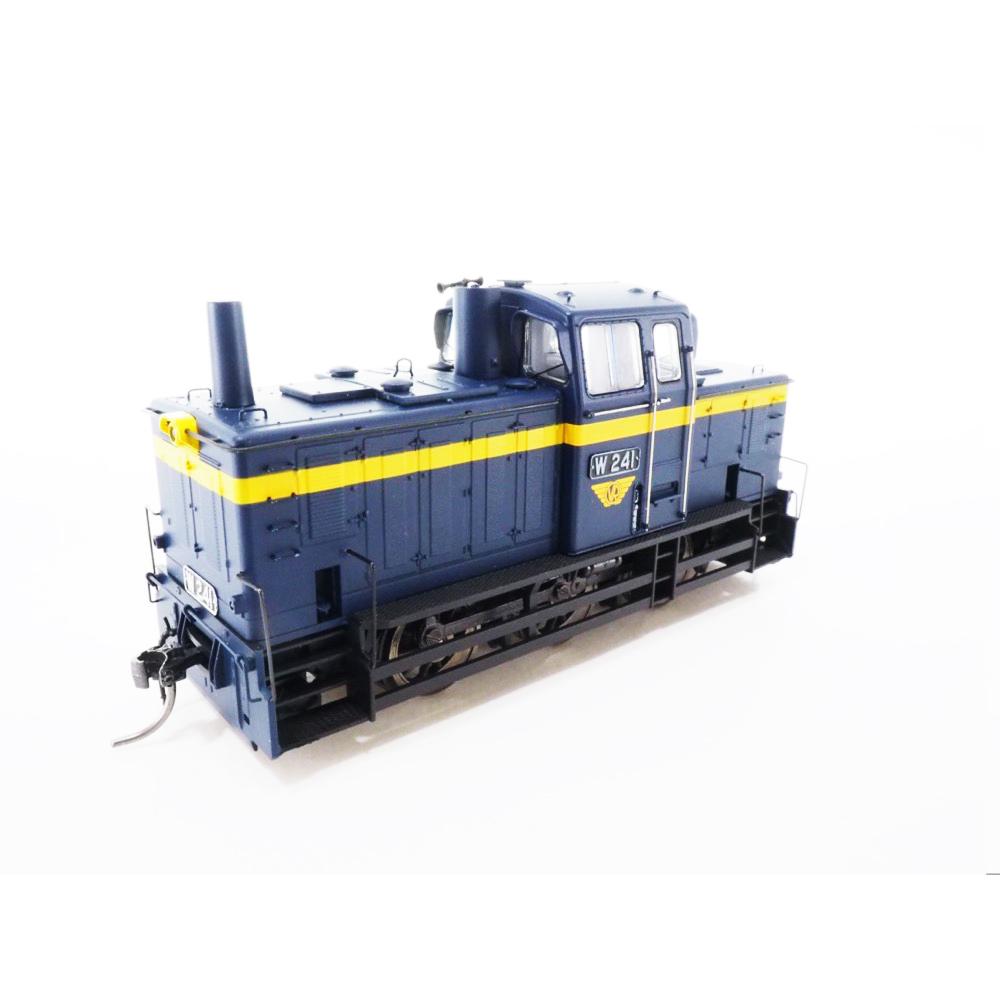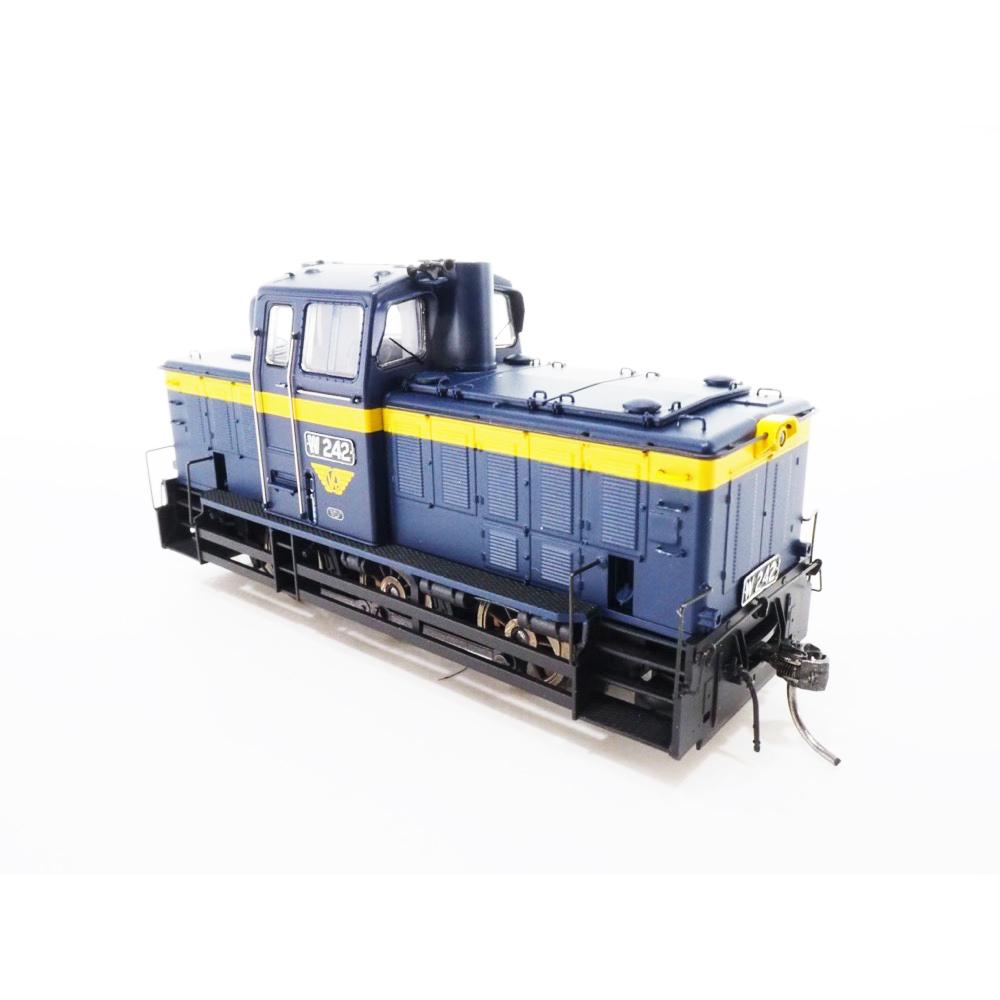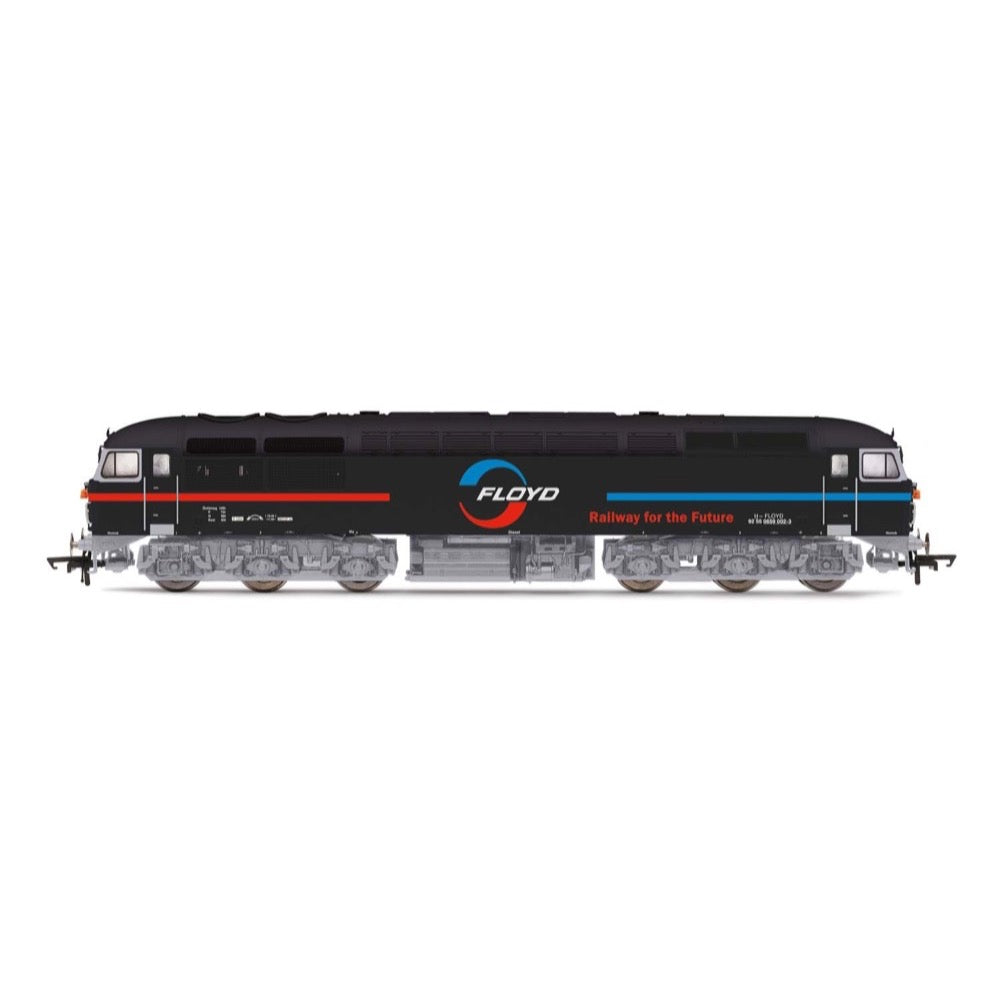
Hornby R3888 OO Floyd Zrt. Class 56 Co-Co 659 002 ex-56115 Locomotive
Floyd Zrt. was one of the first open-access freight operators in Hungary and currently operates a varied traction fleet which includes a number of ex-BR locomotives. 56115 was exported to Floyd in September 2012 from Immingham Docks, after first being prepared at Nemesis, in Burton. Arriving with Floyd, the locomotive was given the distinctive 'Pink Floyd' livery and running number 659 002.
This model forms part of a range called the Euro Connection which features British locomotives operating on foreign shores.
Includes
- 1x Locomotive
Technical Specifications
- Item Length - Without Packaging (cm): 25.4
- Item Height - Without Packaging (cm): 5.8
- Item Width - Without Packaging (cm): 11.2
- Item Weight - Without Packaging: 0.85
- Item Scale: 1:76 Scale 00 Gauge
- License: No
- Finish: Painted
- Colour: Black
- Gauge: OO
- DCC Status: DCC Ready 8 pin socket
- Operator: Floyd ZRT
- Designer: BREL
- Livery: Black
- Minimum Curve (mm): Radius 2
- Motor: 5 Pole Skew wound
- Number of Parts: 1
- Motor: 5 pole skew wound
- Class: Class 56
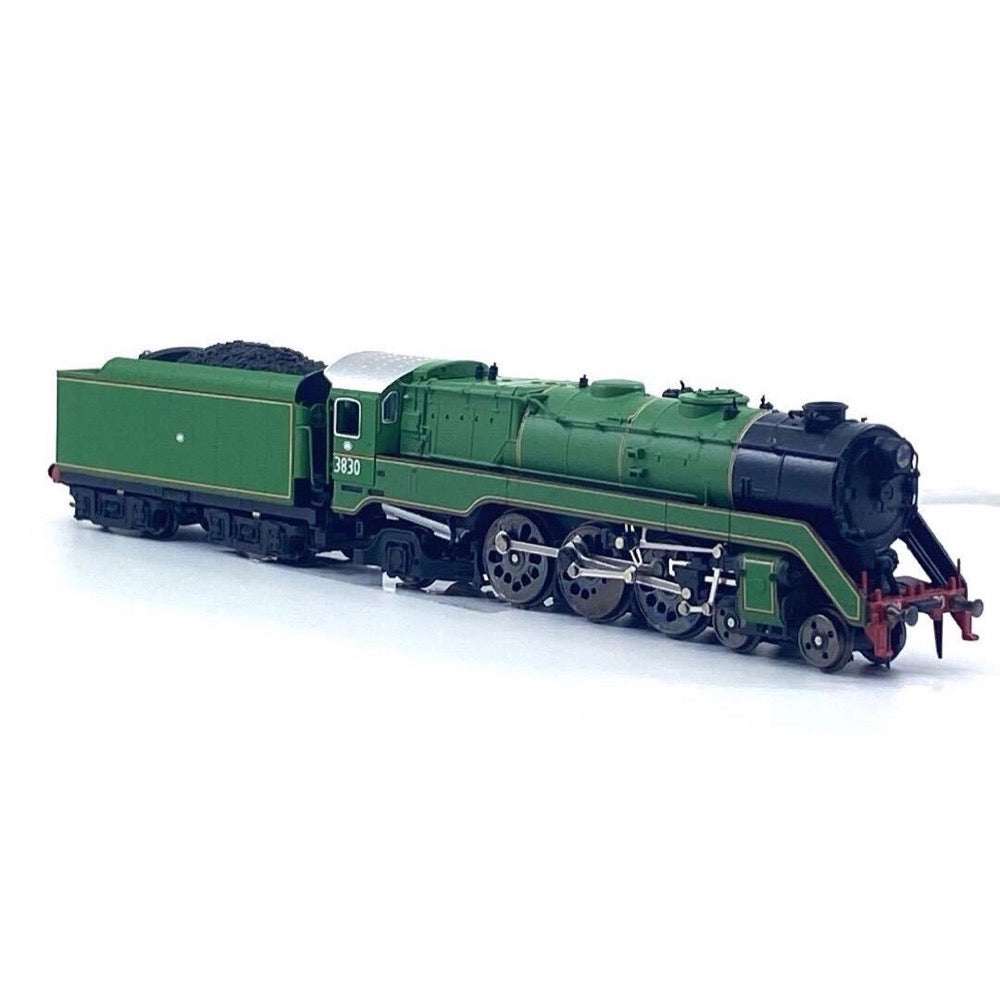
Gopher Models N Scale C38 Class Locomotive NSWGR 3830 (Green)
Gopher Models N Gauge NSW Class 38 Steam Locomotive - 3830 Edition
Discover the unparalleled craftsmanship and intricate detail of the Gopher Models N Gauge NSW Class 38 Steam Locomotive, created in exclusive collaboration with Hobbies Australia. This meticulously engineered model train embodies the heritage and technological advancements of the iconic NSW Class 38, making it a must-have for any model railway enthusiast.
3830: The Final Jewel of the 38 Class Legacy
The last to be built of the renowned 38 class, 3830 holds a special place in Australian railway history. In April 1962, it, along with 3813, hauled the inaugural standard gauge Spirit of Progress from Albury to Sydney. This notable journey marked a significant milestone in the nation's rail transport.
3830 made its final journey on 31 October 1967, hauling a freight train from Moss Vale to Enfield. Over its 18 years of service, it traveled an impressive 1,700,000 kilometers (over 1,056,000 miles), cementing its legacy as a hardworking and reliable locomotive.
38 Class: Engineering Marvel
The C38 Class locomotive, built by Cardiff Locomotive Workshops, boasts impressive specifications that define its power and capability on the rails. With a wheel configuration of "Pacific" 4-6-2 and a driving wheel diameter of 5ft 9in, it exhibits remarkable traction and stability. Its substantial size, with a length of 76ft 5in and a total weight of 201 tons, ensures its presence is felt on the tracks. Equipped with a generous fuel capacity of 14 tons and a water capacity of 8,100 gallons, the C38 Class locomotive is ready for long-haul journeys. Its firebox area of 47 sq ft and boiler pressure of 245 psi enable efficient steam generation, while the cylinders, measuring 21.5in x 26in, deliver a formidable tractive effort of 36,273 lbf. The engineering marvel that is the C38 Class locomotive, embodies the legacy of Cardiff Locomotive Workshops and the rich history of railroading.
Features
- 1/160 N Scale
- DC Coreless Motor
- DCC Sound Ready
- Working Headlamp
- Swivel Bogies on Tender
- Accurately reproduced motion mechanism
- Magne-Matic™ #1015 Couplers
- Min track radius 10.5in
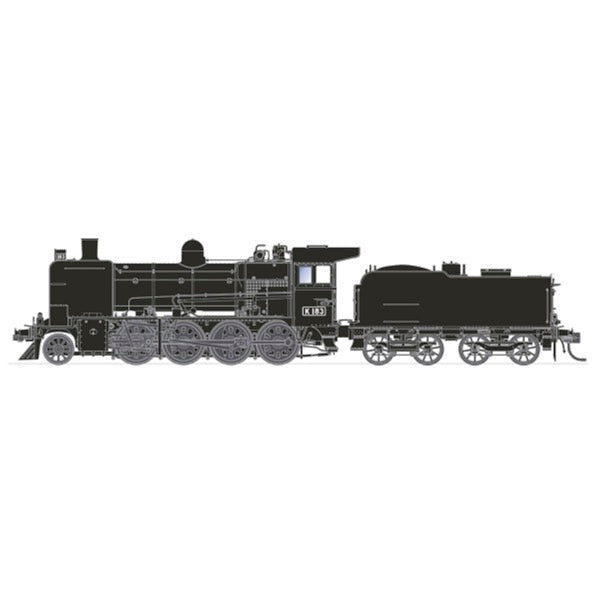
Phoenix Reproductions HO K183 Victorian Railways K Class Locomotive DCC Sound
The Victorian Railways built 53 K class engines at Newport Workshops over a 24 year period, commencing in 1922. The first series of 10 engines were progressively rebuilt in the 1940s to match the performance and visual appearance of the other class members. Later in 1946 the last 9 engines entered service, these engines had single cab side windows and the last 7 engines were fitted Boxpok style driving wheels.
They were extremely versatile engines and could be found and all classes of trains, many worked until the late 1960s and several into the early 1970s.
The Phoenix Reproductions model represents the class in it's later years of government service as well as several colourful liveries of early days preservation.
Features
- Highly detailed Ready-to-Run HO gauge model
- Diecast boiler, frame and footplate
- Genuine Kadee scale head whisker coupler (Tender)
- Separately applied boiler details
- Working LED lights
- All models come standard with an MTC 21 pin motherboard
- Keep Alive Circuit
- DCC version with LokSound V5 decoder
- 22" Minimum Radius
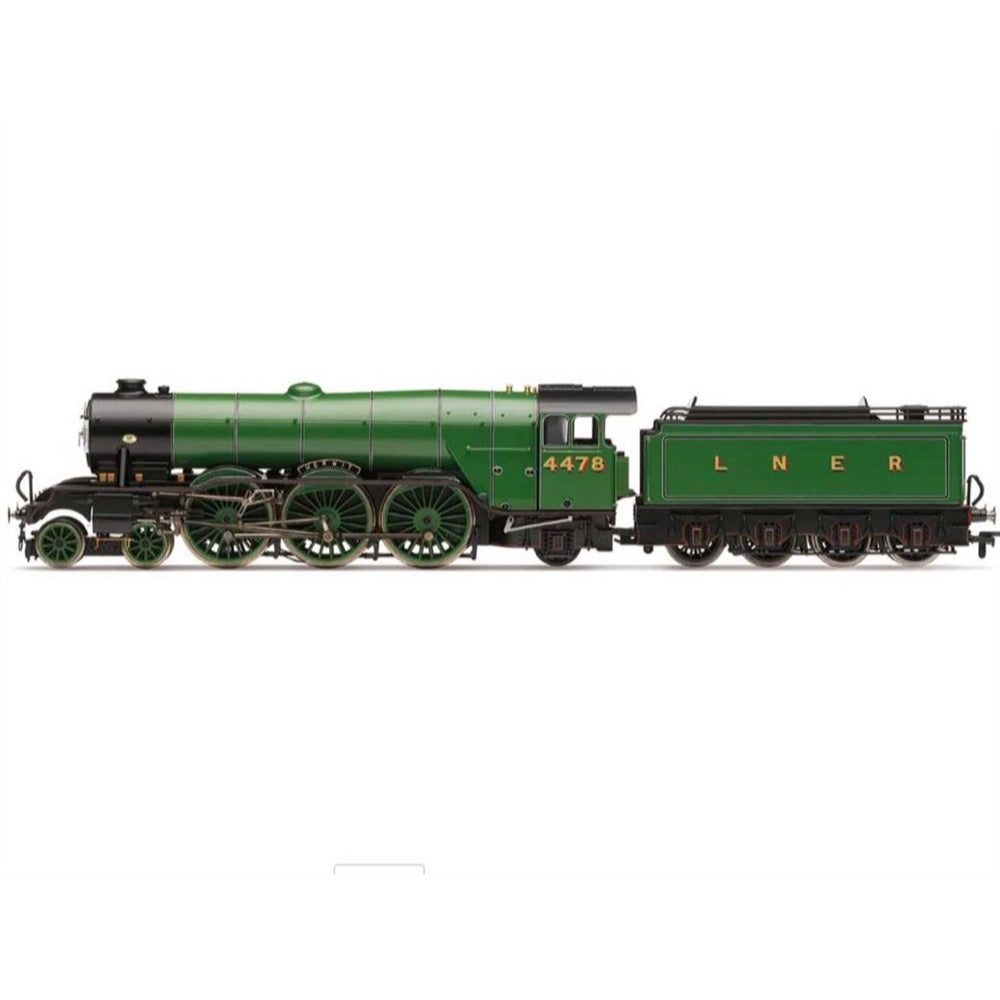
Hornby R30270 OO LNER Class A1 4-6-2 4478 Hermit Big Four Centenary Collection Era 3 Locomotive
Nigel Gresley's A1 Pacific class emerged in the twilight years of the Great Northern Railway, a result of an idea that Gresley had nurtured since 1915. The First World War put his plans for new express passenger locomotives on hold but he applied his new three cylinder, conjugated valve gear designs to the O2 and K3 freight locomotives before returning to his plans for an express passenger Pacific in 1920, producing his 4-6-2 A1 design.
No.1470 'Great Northern' was the first to enter service on the 11 April 1922 and Gresley confidently claimed that his A1 class could pull 600 ton trains which in September 1922 no.1471 'Sir Frederick Banbury' did. Compared to the similar LNER design by Vincent Raven, Gresley's A1 consumed less coal and water and was considered the better design, consequently the LNER chose the A1 design over the LNER A2.
The original eleven engines were built to the generous loading gauge of the GNR and after grouping in 1923 had to be modified to fit the loading gauge of the LNER with the chimney and dome both being reduced in height, plus the fitting of shorter safety valves.
The A1s quickly showed their ability to haul heavy loads on the East Coast Main Line but coal and water consumption was inefficient which was highlighted during the 1925 Great Western Exchange Trains with the A1s comparing unfavourably with the Castle class design. Consequent alterations to the steam lap settings and valve travel showed a reduction in coal consumption and this was adopted on all of the A1s by 1931. The piston valve rings were also replaced by the Knorr type piston valves which reduced steam loss.
Gresley had experimented with a different superheater to improve the A1s performance further but lacking significant results decided that he would increase the number of flues in the existing Robinson superheater. This coupled with an increase in boiler pressure led to improved performance and five of these new boilers were ordered in 1927 and were fitted to No.2544 'Lemberg' and No.4480 'Enterprise' later that year.
Trials on these two A1s proved successful and so between 1927 and 1947 all of the A1s were rebuilt as Class A3 with the exception of No.4470 'Great Northern' which was eventually rebuilt by Thompson in 1945 as Class A1/1. Due to the wider header on the A3 boilers the ends projected slightly through the side of the smokebox and so cover plates were fitted to hide these projections becoming the main external distinguishing feature between the A3 and A1 locomotives.
4478 Hermit was among the first 10 of the class to be built, rolling out of Doncaster works in July 1923 and into revenue earning service with the LNER. Just over halfway through its service life the locomotive would be rebuilt into the improved A3 Class with the conversion being undertaken in November of 1943.
Withdrawal for the locomotive would take place in 1962, with all members of the class bar one being scrapped. Hermit, then 40109, was not the preserved example, with Flying Scotsman being saved and passing into railway legend due to its post-service career.
This Hornby model of 'Hermit' not only boasts a five pole skew wound motor but also a diecast running plate which adds increased weight for improved traction. Also worthy of note is the addition of a flickering firebox which illuminates the fully detailed cab.
Specifications
- Item Length - Without Packaging (cm): 29.1
- Item Height - Without Packaging (cm): 5
- Item Width - Without Packaging (cm): 3.5
- Item Weight - Without Packaging: 0.39
- Item Scale: 1:76 Scale 00 Gauge
- Finish: Painted
- Colour: Green
- Gauge: OO
- DCC Status: DCC Ready 21 pin socket
- Operator: LNER
- Designer: Sir Nigel Gresley
- Wheel Configuration: 4-6-2
- Livery: LNER Apple Green
- Minimum Curve (mm): Radius 2
- Motor: 5 Pole Skew wound
- Number of Parts: 1
- Class: Class A1
- Buffer Type: Sprung Metal Buffers
- Coupling Type: NEM Tension Lock
- Hornby Decoder Compatibility Primary: HM7000-8TXS: Bluetooth® & DCC Sound Decoder (21-pin)
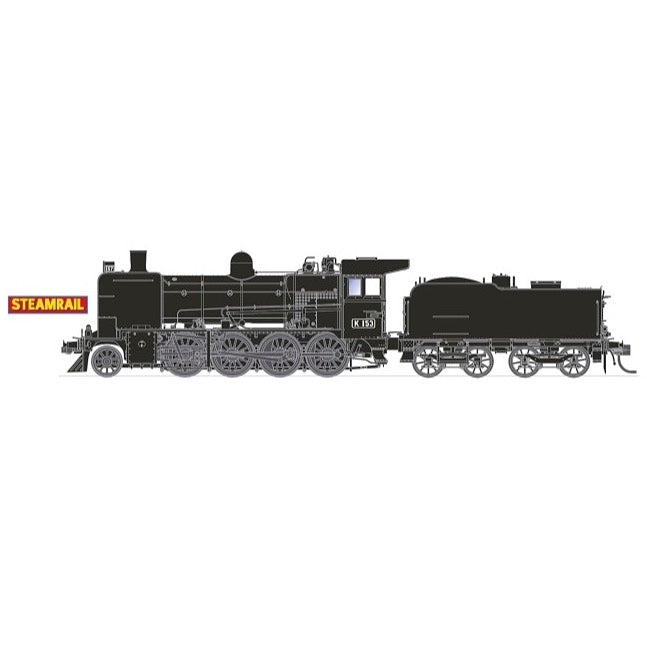
Phoenix Reproductions HO K153 Preserved Steamrail K Class Locomotive DCC Sound
The Victorian Railways built 53 K class engines at Newport Workshops over a 24 year period, commencing in 1922. The first series of 10 engines were progressively rebuilt in the 1940s to match the performance and visual appearance of the other class members. Later in 1946 the last 9 engines entered service, these engines had single cab side windows and the last 7 engines were fitted Boxpok style driving wheels.
They were extremely versatile engines and could be found and all classes of trains, many worked until the late 1960s and several into the early 1970s.
The Phoenix Reproductions model represents the class in it's later years of government service as well as several colourful liveries of early days preservation.
Features
- Highly detailed Ready-to-Run HO gauge model
- Diecast boiler, frame and footplate
- Genuine Kadee scale head whisker coupler (Tender)
- Separately applied boiler details
- Working LED lights
- All models come standard with an MTC 21 pin motherboard
- Keep Alive Circuit
- DCC version with LokSound V5 decoder
- 22" Minimum Radius
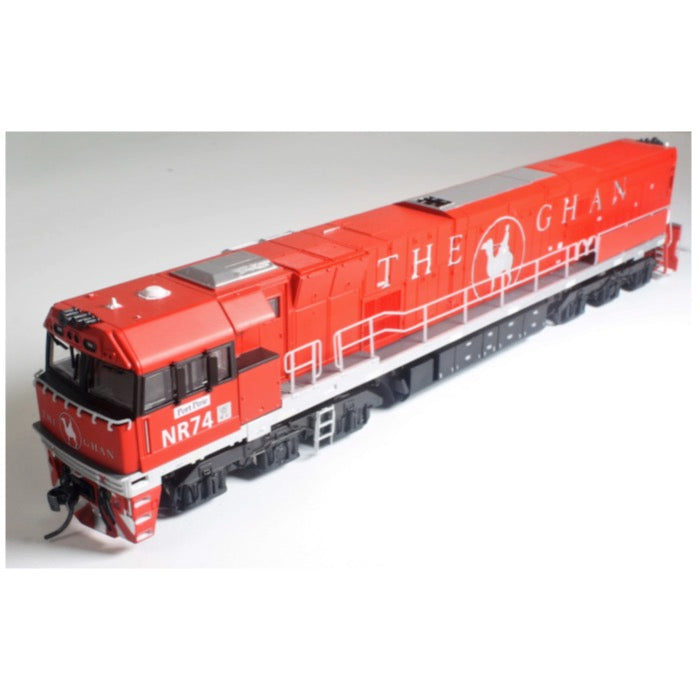
SDS Models NR510 HO NR74 The Ghan Mk1 NR Class Locomotive DCC Sound
Introduced in 1996 by National Rail Corporation these 120 units were built by A Goninan and Co. The locomotives are 3000kw General Electric powered and used on standard gauge Australia wide.
They were introduced in grey and marigold and several were painted into various business units of NRC. Later they wore GSR train liveries representing the Hook and Pull agreement between the two companies.
In 2002 Pacific National acquired the assets of NRC and commenced to repaint the NR class into their new blue and yellow colours.
The model features the current tooling from Austrains and includes operating headlights, marker and ditch lights and is Kadee equipped. These are an ideal way to add colour to your collection.
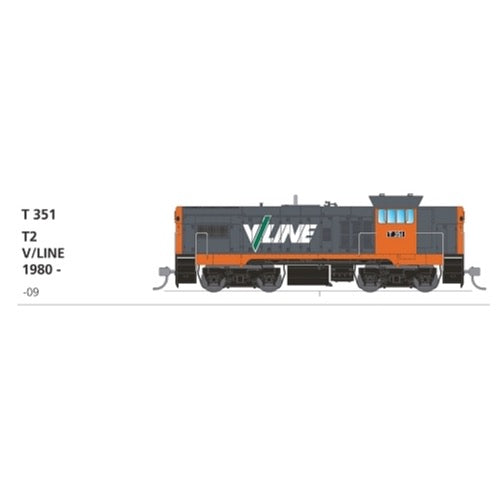
SDS Models HO T351 V/Line Orange T2 Series T Class Locomotive DCC Sound
The Victorian Railways received their second series of T class locomotives from late 1959, these were mechanically similar to the first series but featured a new raised height operating cab layout. This new style of raised cab design featured throughout the remainder of the T class series.
SDS Models are pleased to offer the inclusion of the T-2 series within our range of Victorian Railways T class models.
Based upon the tried and proven Austrains T class mechanism we have comprehensively retooled almost every item, bringing the model inline with our exacting scale and design standards. Some 220 new or re-made parts are involved in the production of the four series we are offering below. All the models now feature prototypically correct width long hoods, series specific and appropriate fuel tank and battery box combinations, improved appearance bogie side frames and brake shoe / wheel tread alignment and a host of other design detail enhancements.
Features
- Highly detailed Ready-to-Run HO gauge model
- Precisely tooled plastic body (ABS)
- Genuine Kadee scale head whisker coupler
- Separately applied handrails and detail parts
- 5-Pole skew wound electric motor and dual flywheels
- All wheel drive and electrical pickup
- LED head and marker lights
- All models come standard with an MTC 21 pin motherboard
- Exclusive and locally recorded EMD sounds by DCCSound



